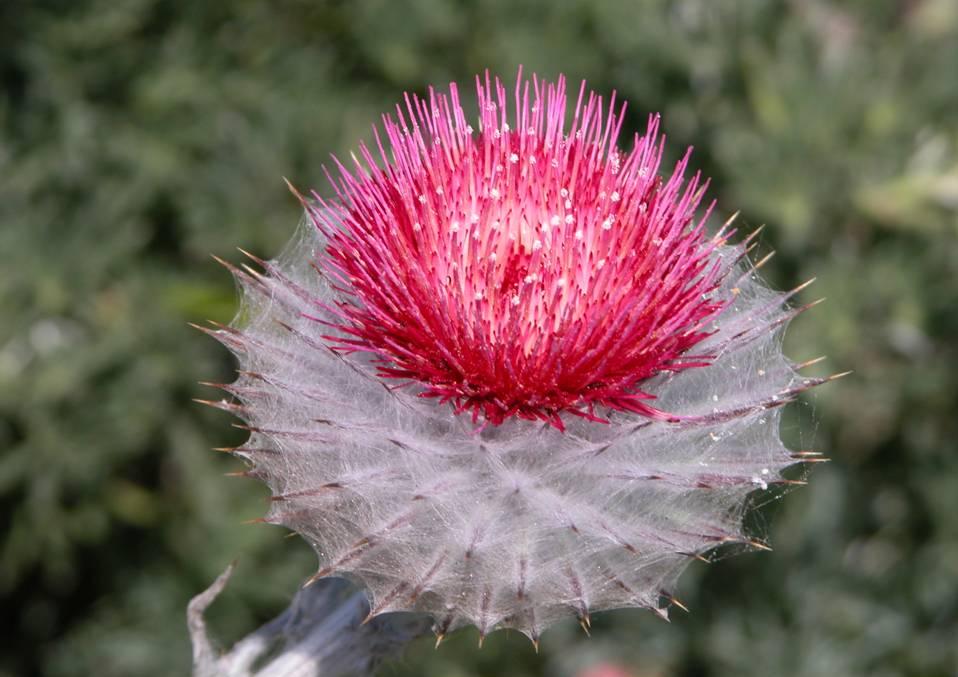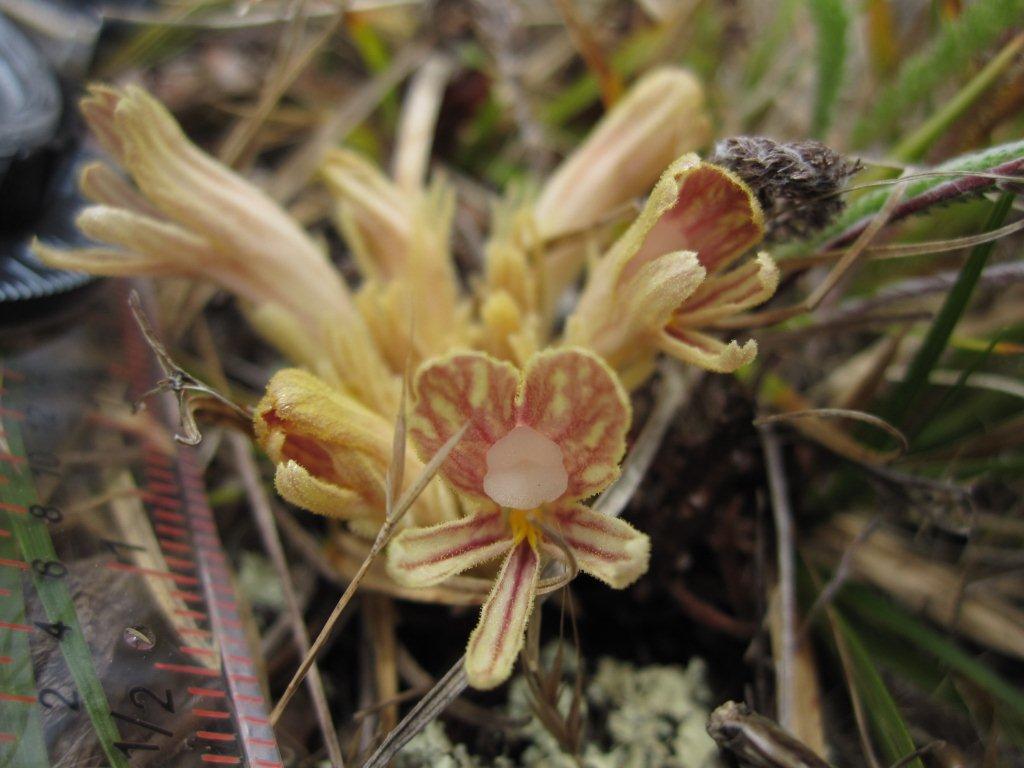Ecology:
Concepts
Coastal Prairie Adaptations
Adaptations are inherited traits that enhance survival and reproduction in certain environments. Adaptations can be morphological (external and internal body form and structure), behavioral, or physiological. The phrase “coastal prairie adaptation” implies that a trait enhances survival and reproduction in direct response to environmental conditions found in coastal prairie. However, many species that occur in coastal prairie may use the same strategy in other habitats, or may have evolved the trait in response to another environmental challenge. For this reason, we limit ourselves to the term “strategy” unless a specific adaptation for coastal prairie survival has been documented.
Life History Strategies
Life history strategies – when and how species reproduce - are the many ways and means that plants have evolved to survive and reproduce in particular environments. One major difference in life history strategies among plants is the length of their life cycles. All three of the following basic life history strategies are used by plants that survive in coastal prairie:
Annual Plants
Annual plants usually germinate, flower, set seed, and die within a year. With one chance to reproduce, annuals often produce shallow roots to take up surface moisture and are quick, aggressive growers. Seeds tend to be small and abundant. Due to the high variability in California rainfall, reproductive success varies widely among years. Fire or intensive grazing may also be enough to cause failure or significant declines in reproductive success. One strategy is to produce long-lived seeds that can persist in the soil and germinate after many years, spreading risk from drought, fire, grazing and other disturbances across multiple years.
Examples of native coastal prairie annuals in Marin and Sonoma Counties include (Calflora 2010; CPEFS 2010):
- San Francisco owl’s clover (Triphysaria floribunda): RARE Species
- Pink butter and eggs (Triphysaria eriantha subsp. rosea)
- Brownie thistle (Cirsium quercetorum): annual, perennial
- California goldfields (Lasthenia californica ssp. californica)
- Davy’s clarkia (Clarkia davyi)
- Point Reyes blennosperma (Blennosperma nanum var. robustum)
- Sky lupine (Lupinus nanus)
- San Francisco spineflower (Chorizanthe cuspidata var. villosa)
- Sonoma spineflower (Chorizanthe valida): State & Federal listing as Endangered
- Douglas’ silverpuffs (Microseris douglasii)
- California sandwort (Minuartia californica)
- Rancheria clover (Trifolium albopurpureum)
- Chilean clover (Trifolium macraei)

Biennial Plants
Biennial plants often complete their life cycle in two years (Raven, et al. 2005). The first growing season biennials form a root system, a short stem, and a basal rosette of leaves which are difficult for grazers to eat and capable of surviving summer drought. During the second year, the plants flower, fruit, form seeds, and die. Many "biennial" plants take longer than two seasons to flower (Gurevitch, et al. 2002), waiting for favorable weather conditions that allow abundant seed production. Comparatively few species are biennials compared to annuals and perennials. Many biennial plants in coastal prairies are introduced.
Examples of native biennials in coastal prairie include:
- Cobwebby thistle (Cirsium occidentale)
- Footsteps of spring (Sanicula arctopoides)
Examples of introduced biennials that are abundant in coastal prairie include:
- Lesser hawkbit (Leontodon taraxacoides)
- Queen Anne’s lace (Daucus carota)
- Storksbill, fllaree (Erodium spp.)
- Dove’s foot geranium (Geranium molle)
- Common evening primrose (Oenothera biennis)
Perennial Plants
Perennial plants may live from several years to many decades. To survive in a disturbance prone habitat, these species must be able to successfully resist or tolerate disturbance. With many years to grow and reproduce, perennials often produce extensive root systems that penetrate deep into the soil, providing the plant with increased access to soil moisture. Some perennials, called geophytes, have underground storage organs in the form of bulbs (short, disk-like underground stems surrounded by enlarged leaf bases), tubers and corms (swollen underground stems), rhizomes (enlarged horizontal stems) and enlarged taproots. Perennials tend to grow more slowly than annual species, but due to their greater access to water, they can extend growth into the summer. Under seasonal grazing, this approach may allow perennials to produce seeds after grazers migrate to wetter, greener pastures. Perennial plants may flower every year or every few years, depending on the species and environmental conditions. Perennial plants tend to allocate more energy to producing individual seeds, which tend to be larger and fewer in number than annual plants.
Examples of coastal prairie perennials include:
- California checkerbloom (Sidalcea malviflora ssp. malviflora)
- Sun cups (Camissonia ovata)
- Western dog violet (Viola adunca)
- Coyote Thistle (Eryngium armatum)
- Brownie thistle (Cirsium quercetorum)
- Coast trefoil (Hosakia gracilis, formerly Lotus formosissimus)
- Chilean clover (Trifolium macraei)
- Tarweed (Hemizonia congesta, Deinandra corymbosa, formerly Hemizonia corymbosa)
Examples of perennials with underground storage organs include:
- Wavyleaf soap plant (Chlorogalum pomeridianum)
- Douglas’ Iris (Iris douglasiana)
- Yampah (Perideridia kelloggii and P. gairdneri)
- Brodiaea (Brodiaea terrestris, B. elegens)
- Blue-eyed grass (Sisyrinchium bellum)
Co-Evolution
Some plants and animals have intimately coevolved together so that one or both may be dependent on the other for its livelihood:
- Dog Violet (Viola adunca ) is the larval host plant of the endangered Myrtle’s silverspot butterfly (Speyeria zerene myrtleae). This means that the adult butterflies lay their eggs on this plant, which is the food source for the larvae. The survival of the butterfly species is linked to the continued persistence of this violet (Adams 2007; Black and Vaughan 2005).
- Tufted hairgrass is one of two coastal prairie grasses that are host plants for the umber skipper (Poanes melane). California brome (Bromus carinatus) is the other host. The caterpillars feed on the leaves and live in the shelter of rolled or tied leaves. The adults survive on flower nectar (presumeably from wildflowers) (Opler, et al. 2010).

Parasitic Plants
Some plants meet their nutritional needs through parasitism. These plants have developed the ability to recognize their host plants, form infective root structures called haustoria, and regulate the transfer of nutrients between the two different plants (Westwood, et al. 2010). Examples of parasitic plants in coastal prairie include:
- San Francisco owl’s clover (Triphysaria floribunda)
- Pink butter and eggs (Triphysaria eriantha subsp. rosea)
- Broomrapes which lack green chlorophyll (Keator 2009):
- Clustered broomrape (Orobanche fasciculata)—often parasitic on buckwheat (Eriogonum spp.) in coastal prairie
- California broomrape (Orobanche californica)—parasitic on plants in the Sunflower Family (Asteraceae)